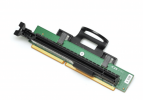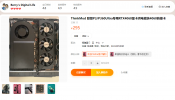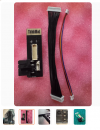Hello everyone!
It's not my conventional approach, but I was enamored with the tiny size of Lenovo's Thinkstation P360 Ultra and decided to buy one. Thorugh parts deals I have it loaded with an i9-12900, 48GB of SODIMM memory, dual WD SN850X SSDs alongside an Optane 900p where my OS lives and an RTX A2000. While DLSS does a ton of heavy lifting at 3440x1440 I would like more graphical grunt. However, the proprietary card Lenovo offers for this build (the laptop A5000) will cost me a cool ~$4500 direct from Lenovo.
Ouch.
That said, the RTX 4000 SFF has hit the market with better specs, 4 extra GB of memory and most importantly, a active 8 pin header from where more performance can be extracted. However, the motherboard uses a custom port to attach the GPU. If I wanted to figure out what each of the header pins does without destroying the board, how would I do that?
It's not my conventional approach, but I was enamored with the tiny size of Lenovo's Thinkstation P360 Ultra and decided to buy one. Thorugh parts deals I have it loaded with an i9-12900, 48GB of SODIMM memory, dual WD SN850X SSDs alongside an Optane 900p where my OS lives and an RTX A2000. While DLSS does a ton of heavy lifting at 3440x1440 I would like more graphical grunt. However, the proprietary card Lenovo offers for this build (the laptop A5000) will cost me a cool ~$4500 direct from Lenovo.
Ouch.
That said, the RTX 4000 SFF has hit the market with better specs, 4 extra GB of memory and most importantly, a active 8 pin header from where more performance can be extracted. However, the motherboard uses a custom port to attach the GPU. If I wanted to figure out what each of the header pins does without destroying the board, how would I do that?





